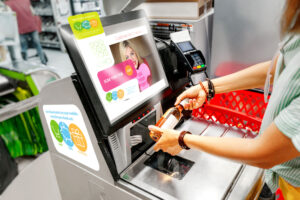A crucial tool in reopening safely after COVID-19
by | 24 August 2021 11:19 am

Anti-microbial protection films prevent the spread of harmful microbes and bacteria in a wide range of settings.
By Shaun Holdom
The pandemic has caused unimaginable disruption among many markets, with the hospitality industry among the worst impacted by the crisis. Helping those in this sector get up and running safely when permitted to do so is crucial to their long-term survival.
While the global rollout of vaccines will have been music to the ears of food and beverage[1] businesses, there is still much for them to do to reopen safely, and ensure they do everything they can to prevent further spread of the virus and protect staff and customers.
Aside from the new-normal measures of installing floor graphics that promote social distancing and glass barriers on counters and between seating areas, there is another option to consider in the form of anti-microbial protection films.
What is an anti-microbial protection film?
Although still a relatively new concept, the clue to the purpose of an anti-microbial protection film is in its name. This substrate prevents the spread of harmful microbes and bacteria in a wide range of settings, such as those in the food and beverage sector, as well as the wider hospitality market.
When bacteria contaminate a surface due to human contact, environmental conditions, or lack of cleaning, they can multiply very quickly. Similarly, fungi and mould can proliferate on a surface, potentially leading to a host of health and safety issues.
While food, beverage, and hospitality outlets will be used to strict cleaning regimes, COVID-19 and the medical dangers it poses have brought about the need to take health and safety in these environments more seriously than ever.
This is particularly the case for fast food restaurants, which see a much higher and faster turnover of customers than other eating outlets, thus increasing the possibility of cross-contamination among those dining in or working at the establishment.
While regular cleaning with an effective detergent will remove these micro-organisms, the use of anti-microbial protection films offers an additional form of protection, something that could prove vital in the ongoing COVID-19 battle.
Antibacterial versus anti-microbial
Now that the core functions of an anti-microbial film have been established, it is important to discuss the main differences between anti-microbial and antibacterial products. While antibacterial films will only protect against bacteria, anti-microbial films are effective against bacteria, as well as fungi including mould, algae, and mildew.
The different effects depend on the chemistry featured within the substrate, typically copper, silver, or zinc. In the case of copper, ions within the element prevent cell respiration and damage the bacterial cell membrane or viral coat to destroy it. With silver, positively charged ions target and kill bacteria, fungi, and certain viruses through several different means.
Meanwhile, zinc-based additives are broad-spectrum anti-microbials, making them effective against many micro-organisms, including bacteria and fungi. This broader performance of anti-microbial substances makes them suitable for use in all environments.
It is also worth noting silver-based technology can migrate out of the film and could become ineffective between three and five years after installation, whereas zinc-based technology is designed to lock into the substrate and protect the surface typically for up to 15 years.
Getting technical
So, how do anti-microbial films work? When microbes meet the reservoirs in the film, the cell wall of the microbes is disrupted. As a result, the microbes are unable to reproduce which, in turn, significantly reduces the risk of any spreading, and cuts the amount of bacteria on the surface.
These anti-microbial films offer reliable, 24-hour protection from mould growth and bacterial contamination, including some of those that prove the most troublesome to fast food restaurants—and other similar settings—such as E.coli and salmonella.
While the films offer proven and extremely reliable protection against harmful microbes, normal cleaning and sterilization practices should also take place to remove biologically active challenges such as aerosol droplets from breathing.
This allows double protection without having to break the bank or risk damaging surfaces in the restaurant with constant cleaning.
A winning combination
Now that the science and technology behind anti-microbial protection films has been established, sign shops need to consider the benefits of adding this product to their service offerings and making it available to their customers.

nti-microbial films offer reliable, 24-hour protection from mould growth and bacterial contamination, including some of those that prove the most troublesome to fast food restaurant.
While the hope is to finally be out of what has felt like a never-ending pandemic, the reality is COVID-19 will be hanging around for some time. Although the vaccine rollout is positive news and does offer a way out, scientists continue to warn measures and restrictions will remain in place to limit further spread of the virus. This means food, beverage, and other hospitality venues will need to ensure they continue operating in line with strict health and safety guidelines, while also enhancing their cleaning regimes. Anti-microbial protection films could help fast food restaurants keep their surfaces as clean as possible.
Wider impact
Of course, there are many opportunities for the use of anti-microbial protection films outside of the food, beverage, and hospitality sectors. These products can be used in all environments where hygiene is of particular importance, such as schools, daycare centres, and hospitals.
Working with a similar approach to food outlets, the substrate can be applied to a wide range of high-touch surfaces and help reduce the risk of cross-contamination in schools and daycare centres.
The same applies for hospitals, too. Medical and health-care environments around the world have been under immense pressure for the last 17 months, but by working with anti-microbial protection films, one could help ease some of the strain by ensuring surfaces are—and remain—clean.
Some anti-microbial products are hard-coated and not only resistant to daily and industrial use, but also vigorous cleaning and the chemicals used in health-care environments, making them an ideal solution for these clients.
Looking ahead
It has been a long year, and people are looking forward to going back to some sort of normalcy, sooner rather than later. There is still plenty of work that needs to be done to ensure more businesses can reopen safely while continuing to protect people—and anti-microbial protection films offer an extremely useful and flexible solution.
Shaun Holdom has more than 25 years’ experience and has worked in various areas of the printing industry, including positions at both hardware and consumables manufacturers. Having previously worked at a leading ink producer, he has a deep understanding of media, coatings, and adhesives from the perspective of their chemistry and compatibility across a diverse range of applications. For the past several years, Holdom has served as Drytac’s global product manager where he has been tasked with streamlining Drytac’s existing product portfolio and successfully introducing new products to the global marketplace.
- food and beverage: https://www.signmedia.ca/publications/de/201704?page=52
Source URL: https://www.signmedia.ca/a-crucial-tool-in-reopening-safely-after-covid-19/